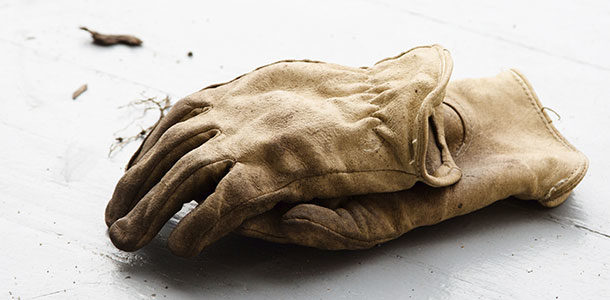When someone says safety equipment, gloves probably aren’t the first thing that comes to mind. Think for a minute though; how many times a day do you use your hands? What would you do if one or both were injured?
Wearing gloves can make a world of difference should something go wrong. Be careful though, not all gloves are cut out for every line of work. A producer wears many hats and performs a variety of tasks on a farm. Do a little research and make sure to always wear the right gloves for the job.
Metal mesh or Kevlar gloves
These are designed to protect against cuts and sometimes puncture wounds. To help with grip, several companies have added rubber or high-tack dots or strips to the palms and fingers of these gloves. Some Kevlar gloves are also flame resistant, meaning that they won’t burn, support combustion or melt if exposed to high levels of heat.
Use these when working around glass, metal, ceramics and any other sharp or abrasive materials. Most manufacturers use the ASTM F-1790 standard rating system. Check this to make sure the glove will adequately protect you.
Leather gloves
Leather gloves are probably what producers use the most. They offer protection from a wide range of hazards including cold, heat, abrasions, sharp edges, cuts and punctures. Some leathers are more dexterous while others are more durable, making them better for working with sharp or abrasive materials. Leather gloves are produced in a variety of styles. Try them on to see which one fits your hands best.
The cuffs of the gloves must also be taken into account. A fitted cuff protects against the cold and holds the glove more snugly on your hand, but a looser cuff allows for easy removal and may be preferable in situations where entanglement is possible.
Rubber, neoprene, latex, nitrile, butyl or vinyl gloves
These synthetic gloves are chemical and degradation resistant, in addition to providing a better grip. Check the chemical’s packaging or Material Safety Data Sheets (MSDS) to know more specifics about the chemical. Check the gloves’ packaging to see if it is suited to your needs. Each company will have its own test data, but look for these words: breakthrough time, degradation and permeation rate. These three ratings will tell you whether or not the glove will protect you.
Remember though, these ratings are all based on pure chemicals, not mixtures. When working with mixtures, choose gloves according to the specific test data if available or based on the chemical component with the shortest breakthrough time.
The American National Standard for Hand Protection Selection Criteria provides a standard classification for manufacturers to rate their products against. Use this when comparing gloves.
Thickness and length need to be considered as well. Thicker gloves will usually have better chemical resistance while thinner gloves give better touch sensitivity. Consider the job at hand and how far up your arm the chemical may reach, including splash room. Also, these gloves are limited-use items that should be replaced after being exposed to chemicals and time.
Cotton or fabric gloves
Cotton or fabric gloves help with grip and protect your hands from dirt, splinters and abrasions. They can also insulate against mild cold and heat, and are especially useful when working with slippery materials.
Temperature-resistant gloves
These gloves will have thick leather, synthetic coatings, insulation, glass cloth or aluminized backing. They are designed for jobs involving extreme temperatures. There are several things to consider when choosing the right gloves of this type.
First determine the level of protection necessary. Consider the type of heat and the length of time you will be exposed, and buy gloves that will protect you from that. The other decision factors are the gloves’ dexterity and the economy or price versus usage rate and potential risk.
Always use the correct gloves for the job and replace damaged gloves. Damaged gloves will no longer protect your hands, and using the wrong gloves can be hazardous. For example, Kevlar gloves are designed to and will protect your hands from sharp edges, but will do little to protect you against chemicals. In fact, the wrong glove may even compound the problem by holding the chemical to your skin.
Gloves need to fit well. Loose or ill-fitting gloves can cause accidents by making it more difficult to work. If grip is a concern, look for gloves with rubber or a holding surface on the palm and fingers. Avoid wearing gloves that impede you from keeping a firm grip on whatever you’re working on.
Never underestimate the necessity of wearing gloves while working on a farm. They can do a whole lot more than keep your hands warm in the winter. One day, you may be thankful for them. FG
PHOTO
Photo from Thinkstock.













